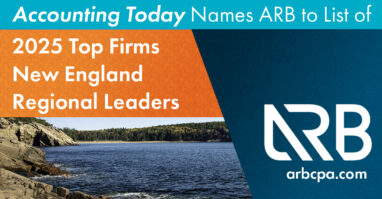Contractors often leverage M&A opportunities to grow revenue and meet growth, development, and other strategic goals. For example, acquiring or merging with a firm with a more experienced labor force and better equipment could help you expand your company’s footprint in the market you serve, branch out to new markets, or gain new subcontractor specialties. But M&A transactions aren’t without risk, so contractors should conduct thorough buy-side due diligence. Here are some best practices to consider.
Review and verify the seller’s entity structure, legal compliance, and reported assets.
Ahead of closing the deal, take the time to review the company’s entity structure and how it could affect the sale. For example, sole proprietorships, partnerships, and LLCs do not have stock. In such cases, a stock sale won’t be possible, so the transaction would either be structured as an asset sale or, the entity is a partnership or LLC, a sale of equity interest. To verify the seller’s entity structure, you will need copies of their articles of incorporation, bylaws, and any related amendments. You should also ask for a summary of current investors and shareholders.
Ask the seller for all company names and trademark brand names and verify their professional licenses, permits, and insurance coverage. Find out all of the states where the company is authorized to do business, and take stock of the compliance requirements based on the laws of each applicable state. Ask if there are open legal issues or ongoing litigation and who currently provides legal representation for the company.
Verify the existence and value of physical assets, real estate, and intellectual property, including ownership of the website, domain, and logo.
Gather information on operations and customer and employee relationships.
As you continue your buy-side due diligence, ask about the current business plan, marketing objectives, and whether they have documented customer or competitor analyses. This information can be particularly beneficial when reviewed against benchmark data and industry trends.
Take a close look at company culture, systems, and operations to assess whether they are likely to blend easily with your own. Obtain copies of standard employee and customer communications and correspondence. What are their HR policies and procedures? Do they have an employee handbook? How are payroll and tax forms distributed?
Who are the key employees, and what are their responsibilities? Do they plan to leave after the sale? If so, you may be able to implement a targeted key employee incentive plan. Ask what incentive plans are currently in use and what standard and elective employee benefits are currently offered.
What employee contracts and independent contractor agreements are in place? Who are the most significant subcontractors? Who are the largest customers in terms of sales? How were those customers acquired? And what measures do they employ to retain them?
Take stock of material obligations and agreements.
As a potential buyer, it’s essential to understand the seller’s current obligations and agreements and how they would affect you after the sale. You may become responsible for certain obligations or be expected to comply with specific agreements.
Does the seller have any partnerships or joint ventures? What about existing loan agreements, lines of credit, equipment leases, mortgages, or collateral pledges? Do they use nondisclosure or non-compete agreements? Are there ongoing warranties, purchase orders, or open job bids?
And ask if there are any contracts between owners, such as a buy/sell agreement or a stock purchase agreement. Are there currently multiple bidders, or are we the only potential buyer? Have they previously tried to sell the company? If so, what changed or led any deals to fall through? Has the company ever been acquired or merged with others in the past? You should also request copies of all applicable documents, including letters of intent, contracts, and closing transcripts from mergers or acquisitions.
Don’t rely solely on the seller’s internal data and financial statements.
When you conduct buy-side due diligence, reviewing and verifying the seller’s financial information is essential. What do capital expenditures and investments look like? How much working capital is required to run the company? How much debt is outstanding, and under what terms? Are margins increasing or decreasing?
Many businesses prepare internal financial statements to give a high-level overview of financial standing and assist with tax filings and other matters. However, they may lack the level of detail you need to get a clear view of the seller’s financial performance. And they may not fully comply with generally accepted accounting principles, especially recently updated standards like those on leases and revenue recognition.
When assessing a seller’s financial health, valuation data, and cash flow and growth projections, it’s best practice to rely on deliverables prepared by a third party, such as a financial statement audit, quality of earnings report, or projections prepared by a CPA or a business valuation prepared by a Certified Valuation Analyst.
Contact ARB
As a firm, ARB specializes in M&A, business advisory, and construction accounting services. Our multidisciplinary approach uniquely qualifies us to assist contractors with sell-side and buy-side due diligence.
As the Practice Leader of ARB’s Construction Services & Business Advisory Teams, I am committed to helping contractors reach their goals and grow their firms through M&A. In addition to due diligence, I can assist with cash projections, structuring transactions and buy/sell agreements, minimizing tax consequences, and more. Contact me today to discuss your strategy.
by David Jean, CPA, CCIFP, CExP

David Jean is a principal at ARB and the Practice Leader for the firm’s Construction & Real Estate, Succession Planning, Professional Services Firms, and Business Advisory Services Teams. He provides specialized tax, accounting, and business advisory services primarily to construction, real estate, and manufacturing companies. David is a member of the NASBP’s CPA Advisory Council. As a Certified Exit Planner and the Director of Altus Exit Strategies, David helps business owners create, implement, and execute successful succession and exit plans.





